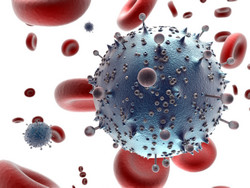Innate immunity and HIV-1
The EU-funded CNKHIV (Characterization of NK cell distributions and functions in human tissues in HIV-1 pathogenesis) project has looked at tissue-specific cell populations as well as their environment to gain a better understanding of the molecular basis of HIV infection and spread. CNKHIV researchers characterised a novel subset of T gamma-delta/NKp46pos lymphocytes physiologically resident only within the intestinal epithelium. Phenotypic characterization of this lymphocyte population showed the specific receptor pattern expression. Microarray analysis revealed the reduced expression of genes associated with TCR signalling with the anergic responsiveness in IFN-gamma secretion and cytolysis indicating their inhibitory regulation. Research results showed a significantly decreased frequency of this cell population in patients with chronic inflammation. The indication is that this lymphocyte subset is involved in homeostasis retention and their loss may be relevant in many human pathologies including HIV infection. The scientists also focused on HIV-associated nephropathy (HIVAN) and have assessed the expression of various molecules including dendritic cell (DC)-sign receptors. For tissue analysis, they used hybridization in situ with the specific anti-DC-sign mRNA probe. Results were confirmed via confocal microscopy analysis. Data showed significant expression of DC-sign receptors in about 20 % of renal glomerula and in primary podocyte cultures. CNKHIV results strongly suggest that DC-sign captures HIV-1 for internalization into podocytes that can express DC-sign receptor. Furthermore, the in vivo DC-sign receptor expression may play a critical role in the establishment of an HIV kidney-specific reservoir and virus dissemination. Researchers also analysed the role of serum soluble urokinase-type plasminogen activator receptor (suPAR) in the development of focal segmental glomerulosclerosis (FSGS) encountered in HIV-1 patients with HIVAN. Results showed that suPAR specifically inhibits the expression of the podocyte protein nephrin. This is critical for the proper functioning of the renal filtration barrier. Further lab work showed that increased concentration of plasma suPAR down-modulates nephrin in podocytes and affects glomerular permeability. In other words, it is directly involved in the onset of different human pathologies including HIV-associated nephropathy. CNKHIV has successfully characterised a novel innate immune T gamma delta/NKp46 cell population and different tissue-specific factors relevant in HIV pathogenesis. This substantial knowledge base can be used in the quest to find a safe and effective vaccine.







